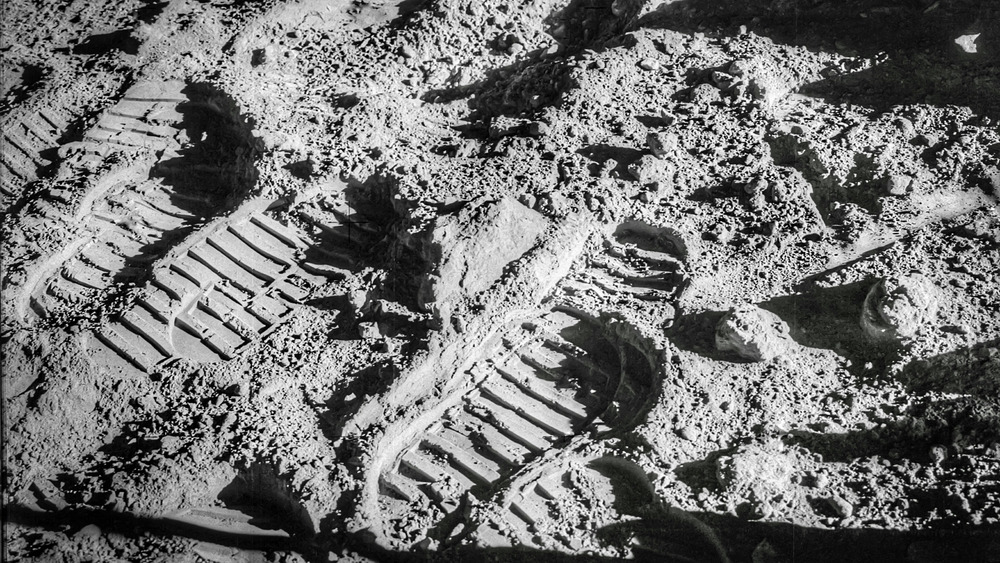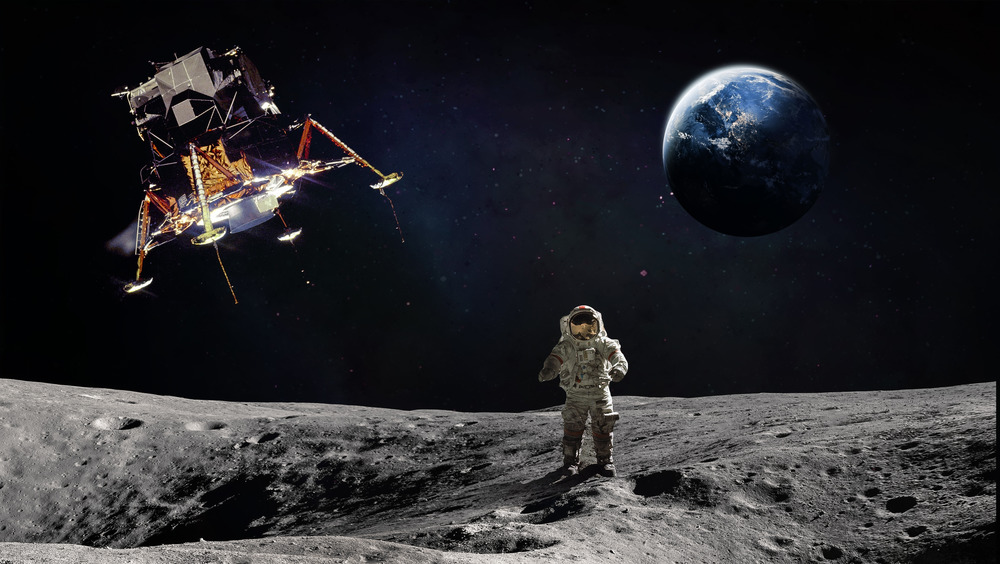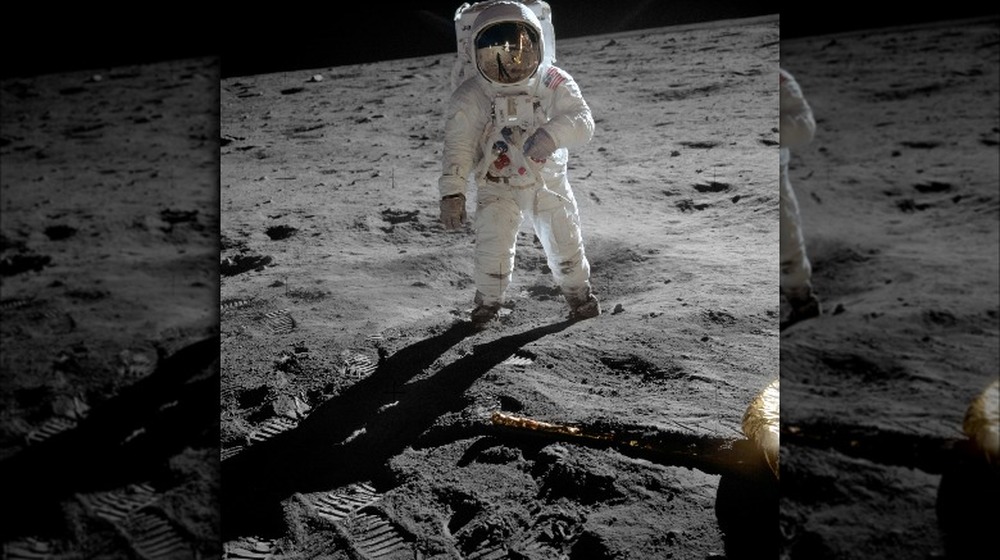The Strangest Things NASA Astronauts Left On The Moon
Humanity truly is a dirty species. It seems that no matter where we go in the galaxy, we just can't help but litter. We've already basically contaminated the solar system, with tons of space trash orbiting Earth, and yes, we've left quite a bit of junk on the moon as well. According to Space.com, scientists at New Mexico State University compiled a list of 106 items that legendary astronauts Neil Armstrong and Buzz Aldrin left behind after putting the first human footprints on the moon during the Apollo 11 mission in 1969. Professor Beth O'Leary said that common sense would dictate that NASA keep a record of the stuff its missions have left behind, but that's not necessarily the case. Granted, this is the administration that once teamed up with the Air Force on a birdbrained scheme to nuke the moon, and also totaled a half-a-billion-dollar Mars satellite project after failing to make a simple measurement conversion, so who are we kidding? Geniuses are humans, too.
"There is debris, there's symbolic artifacts that didn't have to be left there, there's some just amazing scientific stuff," said O'Leary, who added that it's only natural that we would litter on the moon. "It was certainly part of the Cold War history, but it was also about taking human behavior onto a celestial body no one had ever been before. We take our culture with us, we take our ideas and our hopes and aspirations anywhere we go."
The scientific and not-so-scientific stuff astronauts have left on the moon
A total of six Apollo missions put men on the moon over the next three-and-a-half years. The biggest items remaining at the landing sites are the descent stages of the lunar modules that got them down to the surface. These ended up serving as launch pads to get them back into space, so naturally they stayed there. Lots of the other stuff astronauts left behind after the Apollo missions related to the scientific purposes of their visits. Among other equipment, they left seismometers for registering moonquakes and retroreflector mirrors that scientists on Earth shoot lasers at in order to measure the distance of the moon from Earth.
They also left behind a bunch of stuff that wasn't necessary for the journey home in order to bring back samples for scientific study on Earth. Essentially, the more stuff they left behind, the more moon rocks they could take back home. The tube that held the American flag is still up there, as is the TV camera that transmitted that "giant leap for mankind." Armstrong and Aldrin spent around eight minutes chucking nonessential stuff out of the lunar module — from tongs to scoops to armrests — creating was is known in archaeology as a "toss zone." O'Leary and other archaeologists say that the same processes they use to study human remains on Earth can help future generations better understand those first moon missions.
Other stuff left on the moon: mementos, golf balls, and... poo?
There's also a bunch of other stuff left on the moon that wasn't essential to science, but remained either for its symbolism or for the simple fun of it. The Apollo 11 astronauts left a golden olive branch as an emblem of peace. The lunar module boasts a commemorative plaque to honor the mission. And a silicon disk engraved with words from the leaders of 74 countries was also left on the lunar surface.
Later missions found more time for leisure than the first men on the moon. Astronaut Alan Shepard teed off on the moon during the Apollo 14 mission. According to NASA, he said his first two shots were duds, but the third went sailing for "miles and miles." On Apollo 16, Charlie Duke left a signed family portrait in a plastic sleeve on the moon, but future astronauts probably won't see the smiling members of the Duke family, as the ultraviolet rays and micrometeorites have probably faded and destroyed the print by now.
Believe it or not, there's astronaut poo on the moon as well. Human waste was also unnecessary for Apollo 11's return voyage, so they literally just tossed four bags of poo and pee onto the moon. While it may sound like an episode of Futurama, the excrement could actually serve a scientific purpose on future missions, providing insight into what kinds of effects the lunar environment has on the human body over time.


